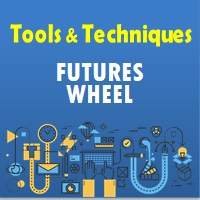
The Futures Wheel Technique for Problem Solving
Futures Wheel helps people develop the skill of visual perception that involves organizing and interpreting information and giving it meaning.
If you’ve ever needed to explore the full impact of a proposed change, you’ll know how hard it can be to identify all possible outcomes. In situations like these, many people panic, and list the first consequences that they can think of, resulting in a list that’s shallow, incomplete, and tricky to analyze.
This is where the Futures Wheel can help. This visual tool gives you a structured way of brainstorming the direct and indirect consequences of a decision, event, or trend.
Why is visual perception skill important for problem-solving? Visual perception skills are the ability to make sense of what the eyes see.
If you’re looking to explore the structural consequences of a proposed solution, then this activity is your best bet.
Write the change that you need to consider in the center of a piece of paper, or on a flipchart. This could be an event, trend, problem, or possible solution.
Now, brainstorm possible direct consequences of that change. Write each consequence in a circle, and connect it from the central idea with an arrow. These are “first-order” consequences.
You now need to brainstorm all the possible “second-order” consequences of each of the first-order (direct) consequences that you wrote before. Jot these down in the order of importance.
Then, repeat this by identifying the third-order consequences, fourth-order consequences, and so on.
Analyze each aspect and complete this activity within a time period of about 30 minutes. Once you’ve completed all of the levels of the Futures Wheel, you’ll have a clear picture of the possible direct and indirect consequences resulting from the change.
This visual technique will make it easier for you to outline the best method to go ahead with to attain the desired outcome.


